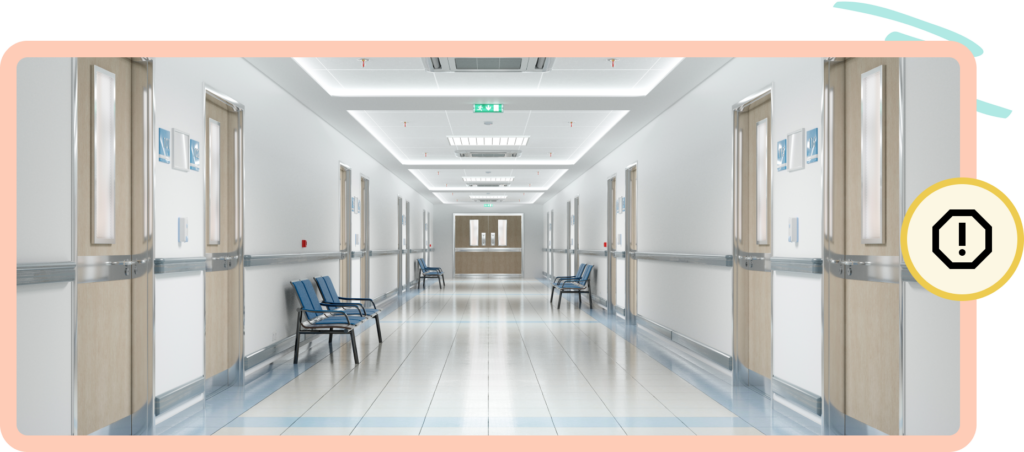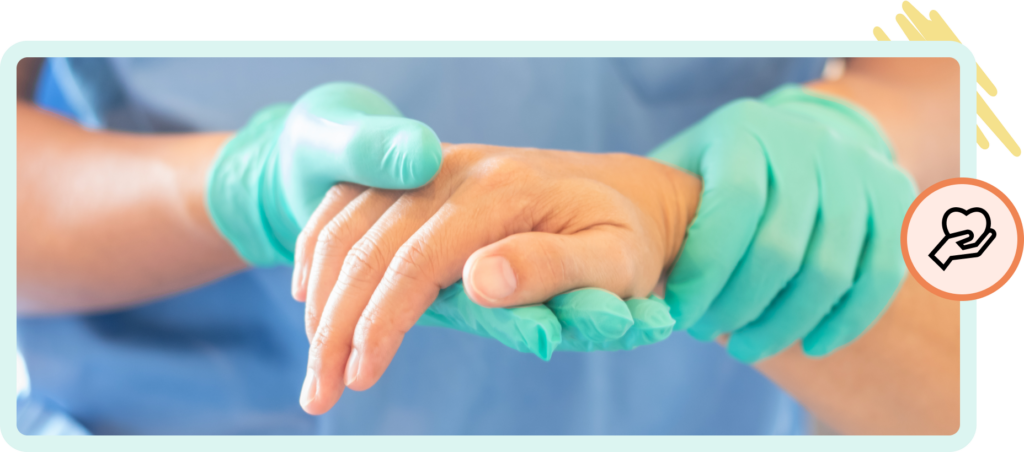Without a doubt, the COVID-19 pandemic changed the face of nursing in the U.S. The healthcare industry is beset with countless challenges. Some arose as a result of the pandemic, while others were merely heightened by it.
The Virtual Shift
COVID led to the quick development of tech-forward capabilities like telemedicine and remote/online nursing instruction. And although the pandemic is over, the virtual trend continues. New technology has normalized online instruction and blended coursework in nursing education. And it follows that institutions of higher ed have been forced to develop new ways to measure student success and skill mastery.
A 2021 report from Wolters Kluwer and the National League for Nursing (NLN) showed that 73% of institutions shifted to exclusively online instruction at the start of the pandemic and that 40% would continue to offer additional online courses in the future. In addition, the report noted that 48% of institutions planned to increase their investment in virtual simulation over the next two years.

The Shortage
By far the biggest challenge in delivering quality healthcare today is the shortage of qualified nurses. A variety of factors have contributed to this deficit.
Increasing Need
According to the U.S. Bureau of Labor Statistics (BLS), the employment of registered nurses will grow 9% between 2020 and 2030. On average, they project around 194,500 openings for registered nurses each year, throughout the decade. It is important to note, however, that this projection was made before the healthcare system endured the pandemic and its impact. So, these figures likely under-predict the true demand for nurses.
Limited Capacity
In 2019—again, even before the pandemic—more than 80,000 qualified applicants were rejected by nursing programs because of faculty and classroom shortages, according to a report by the American Association of Colleges of Nursing (AACN). To this day, there simply aren’t enough qualified teachers or teaching spaces available for on-site nursing instruction.
The Mass Exodus
In recent years, bedside nurses have left the profession in droves due to unsafe staffing ratios and associated burnout. This perpetuates an ongoing cycle of shortages—nurses face unsafe staffing ratios so they leave the bedside, which leaves even fewer nurses to care for patients.
Another factor contributing to the shortage is the mass retirement of seasoned nurses. An entire generation of nurses is aging out of the healthcare workforce.

Additional Challenges
Rapid Innovation
Breakthroughs in gene therapy, nanomedicine, digital medicine, mRNA research and more, are occurring at an “unprecedented and exponential” rate. This poses a challenge for leaders in healthcare, as innovation is happening too quickly for hospitals to keep up. They are tasked with staying abreast of cutting-edge trends, then determining whether such innovations are cost-effective, and/or whether they improve the quality of care.
Patient Safety
Med administration errors, invalid diagnoses, mistakes made in surgery, and hospital acquired infections (HAIs) make patient safety an ongoing challenge for healthcare systems.
In addition to these factors, the Affordable Care Act, which made healthcare services accessible to a greater number of people; an increased focus on preventive care and chronic disease management; the aging and associated medical needs of the baby-boomer population; and a growing interest in community-based care; have all put a greater burden on an already stressed American healthcare system.
Developing Solutions
One benefit of the deluge of new nurses entering the profession is that they have fresh eyes to see the challenges, inefficiencies, and areas for improvement in the field—and offer new ideas for solving them.
For example, one new nurse saw senseless waste every time she tried to grab a single rubber glove from the box and multiple gloves poured out. So, she developed a technology called ReduSeal, which makes it easier to pull out just one glove at a time, without wasting a dozen more.
Another innovation was offered by a gerontological nurse practitioner, who developed heart-failure monitoring socks that measure swelling, activity, and more—for patients who have difficulty checking their own symptoms.
Seeing and addressing opportunities to improve patient care in a cost-effective way requires an understanding of how to identify a challenge, how to think through a solution, and how to advocate and champion an idea.
To shift healthcare from a reactive to a proactive discipline, innovation expert and thought leader Dr. Tiffany Kelley recommends providing undergraduate nursing students with a solid foundation in innovation theory, methodologies, and implementation. And she proposes the continuation of innovation practice and preparation throughout graduate-level nursing study.
Dr. Kelley strongly advocates for the incorporation of innovation study into the core curricula of all nursing programs, as it prepares future nurses to recognize systemic challenges and trains them to solve for unmet needs—positively impacting the quality of patient care.

The New Essentials
Nurse educators are uniquely poised to equip new nurses with the skills they’ll need to innovate in the ways we’ve discussed, and with the confidence they’ll need to succeed in doing so. Many of these skills are included in the new Essentials, a framework designed to prepare nurses for clinical practice, published by the American Association of Colleges of Nursing (AACN). The AACN’s new Essentials establish consistent and universal standards across nursing ed programs to ensure students master key competencies and gain an adequate amount of clinical practice—so they’re prepared to deliver effective patient care upon graduation.
Among the list of concepts deemed essential to professional nursing practice by the AACN are: communication, clinical judgment, and diversity, equity and inclusion (DEI).
Effective communication can mean the difference between a patient’s life and death. In a healthcare setting, promoting open dialogue between team members improves patient outcomes and encourages much-needed collaboration. The communication skills developed throughout nurses’ didactic study, clinical training, and skills demonstration promote future innovation—equipping students to identify and explore challenges in the field, develop possible solutions, and advocate for their adoption.
To effectively teach communication skills to new nurses, instructors must continually observe students’ performance, assess that performance, and provide constructive feedback. For tips on cultivating effective communication, check out our playbook, “Communication Competency: The Nurse Educator’s Guide to Teaching & Assessing.”
Clinical judgment is another essential component of nursing practice. As nurses gain knowledge and sharpen skills, they become adept at analyzing patients’ symptoms in a holistic way, using both objective and experiential data to offer evidence-based interventions that improve patient outcomes. And clinical judgment requires effective reflection and reasoning, which are essential to innovation.
As with communication, to strengthen new nurses’ clinical judgment, instructors must continually observe, evaluate, and critique each student’s performance. For more information on integrating clinical judgment into your nursing curriculum, check out our webinar, “Integrating Clinical Judgment Across Your Pre-Licensure Nursing Curriculum.”
The AACN also names diversity, equity, and inclusion (DEI) as essential to nursing practice, as it:
- Improves the quality of education by allowing faculty and students to learn from people with diverse life experiences, perspectives, and backgrounds.
- Addresses inequities in healthcare by ensuring that nurses are prepared to meet the needs of a diverse American population.
- Enhances the civic readiness and engagement of nursing students who will become leaders—both in healthcare and in a broader sense.
- Better equips nurses to innovate in ways that benefit patients from all circumstances and backgrounds.
As with communication and clinical judgment, students’ understanding of and sensitivity to the importance of DEI can be evaluated through ongoing patient-care observation, assessment, and feedback.

Video + Feedback for Assessment
The importance of nursing students bringing fresh eyes to assess the healthcare setting, identify challenges, and propose innovative solutions, can’t be overstated. And creating opportunities for increased and enhanced practice, observation, and evaluation of these and other skills requires the right tools. Among 4 Technologies to Consider for Innovation in Nursing Education, are video skills/video capture software. GoReact video assessment software enables both.
Video assessment software allows students to record and upload videos of themselves demonstrating skills anywhere at any time—safely and securely. Instructors can also use the technology to capture role plays and SBAR group assignments, and upload high-tech simulation lab videos. And GoReact allows instructors to upload rubrics, create custom markers, and provide time-stamped, multimodal feedback to evaluate competencies.
In sum, video assessment software solves four common challenges faced by nursing programs today:
- Accessibility for all learning environments.
- Better preparation for practice.
- Enhanced program capacity.
- The need for innovation.
GoReact is designed to help your nursing students gain knowledge, master competencies, and ultimately, provide better patient care—amid any challenge.
In Conclusion
For a deeper discussion about equipping nursing students with the skills they’ll need to drive change and innovation in healthcare, check out this webinar, featuring Dr. Tiffany Kelley: “Prepare and Inspire Nursing Students to Make a Positive Impact in Healthcare.”











